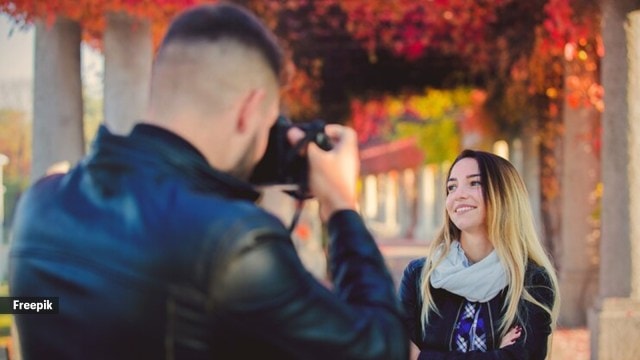📣 For more lifestyle news, click here to join our WhatsApp Channel and also follow us on Instagram
Why we say ‘cheese’: The evolution of smiling in photography
American writer Mark Twain notably expressed his disdain for smiling in photographs.
 In the 19th century, having your photograph taken was a formal affair, and the subjects rarely smiled (Source: Freepik)
In the 19th century, having your photograph taken was a formal affair, and the subjects rarely smiled (Source: Freepik)In modern photography, the phrase “say cheese” is universally recognised as the go-to prompt for encouraging people to smile. But this wasn’t always the case. The journey from serious Victorian-era portraits to today’s cheerful snapshots reveals fascinating changes in both technology and social customs
The era of serious faces
In the 19th century, having your photograph taken was a formal affair, and the subjects rarely smiled. This solemnity wasn’t just a matter of cultural preference — it was largely practical. Early photography required subjects to remain completely still for extended periods, sometimes up to several minutes, making it difficult to maintain a natural smile.
American writer Mark Twain notably expressed his disdain for smiling in photographs. According to Mark Twain and the Happy Island written by Elizabeth Wallace, Twain said, “A photograph is a most important document, and there is nothing more damning to go down to posterity than a silly, foolish smile caught and fixed forever.”
The ‘prunes’ era
Before “cheese” became the photographer’s word of choice, many photographers would actually instruct their subjects to say ‘prunes.’ This word was chosen deliberately — when pronounced, it causes the mouth to purse, creating what was considered a more sophisticated and composed expression. This aligned with the Victorian and Edwardian ideals of proper deportment and dignity.
Paintvine, in a report, notes, “Plus, the lack of dental care at the time meant that many people were reluctant to reveal their teeth, and so smiling was reserved for children and the occasional drunk person — because lets be honest, no one can tell a tipsy person to say ‘Prunes!’ and expect them to keep a straight face.”
 Before “cheese” became the photographer’s word of choice, many photographers would actually instruct their subjects to say ‘prunes.’ (Source: Freepik)
Before “cheese” became the photographer’s word of choice, many photographers would actually instruct their subjects to say ‘prunes.’ (Source: Freepik)
From ‘prunes’ to ‘say cheese’
The transition from ‘prunes’ to “cheese” has an interesting political connection. According to various historical accounts, the popularisation of “say cheese” is often attributed to the US Ambassador Joseph E. Davies and President Franklin D. Roosevelt in the 1940s. Some sources suggest that Ambassador Davies, while being photographed, mentioned learning the “cheese” technique from Roosevelt himself. The word “cheese” creates a natural smile shape with the mouth, unlike the puckered expression produced by “prunes.”
Global variations
As photography became more accessible and casual smiling more acceptable, the practice spread globally, with different cultures adopting their own variations based on local foods and customs:
-In South Korea, photographers often ask subjects to say “kimchi“
-In Spanish-speaking countries, particularly in Argentina and Colombia, “whiskey” became a popular alternative
-In India, “paneer” is sometimes used, following the dairy theme of the original
The modern context
Today, “say cheese” has transcended its original purpose to become deeply embedded in popular culture. The phrase represents more than just a photographic instruction — it symbolises the shift from photography as a formal, serious endeavour to a casual, joy-capturing medium.
The evolution of “say cheese” parallels the democratisation of photography itself. As cameras became more accessible and exposure times shortened, people felt more comfortable expressing themselves naturally in photographs. The formal, rigid poses of the Victorian era gave way to more spontaneous, genuine expressions.
📣 For more lifestyle news, click here to join our WhatsApp Channel and also follow us on Instagram



- 01
- 02
- 03
- 04
- 05

























